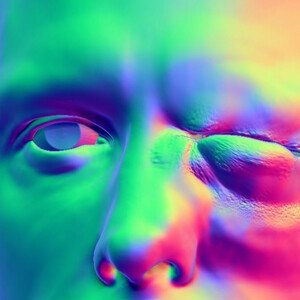fleuryfontaine
Naomi Heinrich
Quentin L'Helgoualc'h
Exhibition initially presented by Glassbox-Sud in 2020, resulting from the joint residencies of fleuryfontaine, Naomi Heinrich and Quentin L'helgoualc'h in Sète.
Critical text by Clémence Agnez for the first edition of the exhibition.
What do we do after the sirens? Not after they have fallen silent, giving way to silence and time for reflection, but rather when they have burst forth in a thousand directions, screaming to exhaustion and in every place the imminence of an infinite number of dramatic events, sometimes concordant, sometimes contradictory. The danger is always already there, yet still to come. The cry of the sirens, a disjointed choir of seductive speeches and howling tocsins, splits the contemporary subject between its lines of flight in all directions. If flight is no longer appropriate, neither is the suspension of judgement and action.
What to do after the sirens? No longer to articulate a discourse on them, but to elaborate hyper-local representations of the sometimes dramatic phenomena they cover and, above all, enable. We must force ourselves to silence the disastrous polyphony of these parasitic signals that drown out the cries of martyred bodies in the name of the danger to come, of safety elevated to the rank of the supreme good, of order - not just any order, but the one already established. After the sirens, we can finally turn our attention to the relationship we have with our main tools, our digital prostheses. These auxiliary friends and foes, whose sense of subordination and dependence flickers with the uses and developments of complex systems, can, if we are not careful, take over even the most innocuous of our behaviours. And in the end, once the alarm bells of disaster have rung, in the desert expanse left behind by our dreams of metropolises, we are left to imagine the fireproof ruins of a civilisation seeking asylum on the fringes of its worn-out kingdom.
t is here, amidst the ruins, that the exhibition begins: a fragmentary representation of civilisational remains after the great fire, an eschatological projection of a fantasised purifying apocalypse, the objects that make up Naomi Heinrich's installation speak to us of a world where the crisis makes ruins the very paradigm of building material. With building sites suspended between stock market crashes and natural disasters, here we recognise our world caught in the vice of the post (post-contemporary, post-truth) and the pre (preventive, predictive), in which future construction and the ruins of the past combine in a single form, where the edges of time merge.
A little further on, the cajoling voice of the android narrator in Quentin L'helgoualc'h's film whispers in our ear this new kind of tale about a black mirror dependency, soon to be shared between humans and machines, a place where, once we have reached the point of singularity, we have to learn to cohabit with our becoming-IA, which already structures the most secret of our desires.
Deliberately staging the glitch of digitising an IRL body modelled in the intersecting beams of two cameras, the virtual double of the captured subject is shaken by digital-neurological spasms, between a crisis of lack and apprehension about his or her motor faculties. The newborn cyborg, struggling to master its new envelope, tells us how it shares the space of consciousness and desire with us, and how, contrary to our fantasies of robotic prostheses, the human in turn becomes the AI's auxiliary. Stored nearby, large plywood panels echo the ogive shape cut by the chapel's arches. With the obstinacy of a guilty conscience, Fleuryfontaine's installation brings to mind the striking artefacts of a broken revolt. We are reminded of the devices used to protect shop windows and banks during the Gilets Jaunes protests. To protect what? What did we save? In the midst of this disciplined chaos, a multitude of screens on the floor reconstruct in 3D models the mutilated body of a victim of state violence. The wounds and their consequences - haematomas, swellings and gaps - swell, disappear and rise to the surface in a slow, haunting breath.The shimmering skin in synthetic colours shows us how, through its pores and in the ceaseless ebb and flow of the effects of police mutilation, the breath of the contemporary political subject is set.
fleuryfontaine
fleuryfontaine is a duo of artists working on the place that each and every one of us occupies in the neo-liberal, artificial and secure environments that shape our behaviour, our bodies and our relationship with the world and with others. Their work takes the form of installations, sculptures, performances, toy videos, films and digitally generated images.
Naomi Heinrich
By correlating photography, video, 3D images, sculpture and space in her installations, Naomi Heinrich creates devices that create a landscape that is both concrete and virtual. She questions our situation as individuals circulating within hybrid environments that oscillate between construction and destruction, between building sites and ruins. In this in-between state, her work bears witness to transitory states.
Quentin L'helgoualc'h
Quentin L'helgoualc'h is a visual artist and video maker. His work involves a repetitive dialogue between the mediums of photography, drawing, sculpture and film, where relationships of scale and friction between the perception of the real and the imaginary come into play. By making the production process visible, he proposes to rethink the boundaries between these forms. Through a number of exhibitions and residencies, his work is part of a dynamic exploration of spaces.

